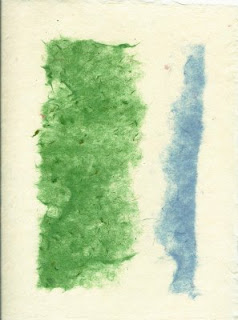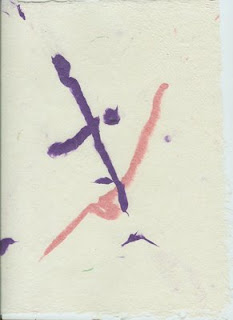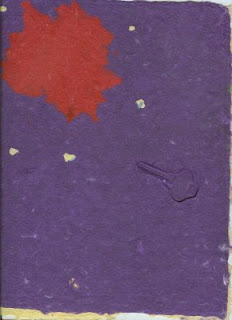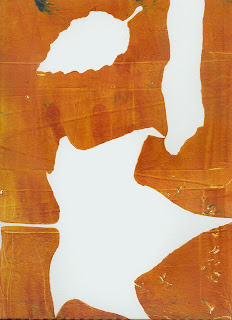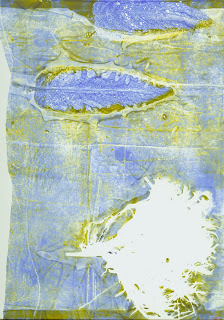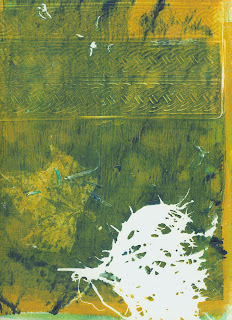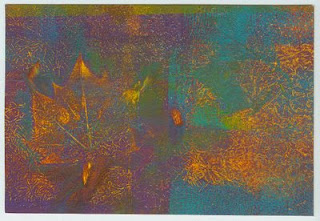
But, I could not bring myself to do four original paintings.
The size wasn’t overwhelming. The last few years I’ve sent art postcards to my sister, Maria, and her art friend, Beth. Was it intimidating because the looming deadline? Or the need to do something good other people would hold in their hand and judge?
 Field of Gold and Blue
Field of Gold and BluePerhaps I was feeling pressure at work with end-of-year deadlines. Yet, some of my best works came about with time limits. Perhaps I was out of practice doing daily paintings. Yet, I’d gotten confidence with my recent large painting. Whatever was holding me back, I looked through my paintings on watercolor paper, picking out ones to recycle. With a clear 4” x 6” acrylic box frame, I removed the cardboard backing and it became an easy view frame. I could move it around the piece, selecting areas to cut down and become new mini-paintings. This worked better for me, at least this time.
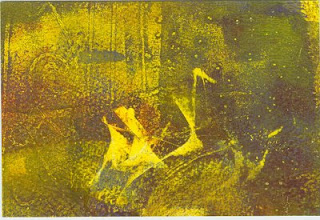
I don’t do art on demand very well. Do you? I enjoy painting alone without others looking over my shoulder or telling me what to paint. After my first exhibit, I was approached to do a commission. It was to be a Christmas present for a relative and I was told some things and themes he liked. It would be a more realistic painting with objects I’d have to research, even if it later became more abstract. The more I thought about it, the more I disliked the idea and had to turn down the offer.
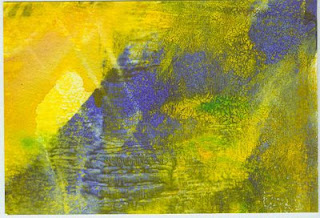
I had the same feelings entering a local photography competition. Bringing my camera to a favorite walking trail everything looked different. Instead of taking pictures for my own enjoyment, they would be judged. Looking through my view finder, trees and squirrels and birds and flowers appeared altered. With every click of the shutter I thought, what would please them (the selection committee) instead of what would please me. It put a spin on every frame I snapped.
So, I guess I’ll continue to choose my own projects and my own themes. It feels more authentic to stay true to my own emerging vision rather than incorporating other’s. Of course, since I don’t paint for a living, I can afford this luxury. Because I have to be so logical and rational at work, I need my art to be the opposite. When I begin a project that feels too methodical or exacting, I will often abandon it. I need the balance of being wild, impulsive, and intuitive in my art.

